- Cross Thorong La (5,416m.) – one of the longest passes in the world.
- Explore the cultural and natural beauty of the Annapurna region.
- Visit Hindus and Buddhist’s holiest Muktinath temple.
- Superb views of Mt. Manaslu, Pisang Peak, Annapurnas, Himalchuli Peak, and Fishtail Mountain.
- Hike along with the world’s deepest gorge – Kali Gandaki River
- Explore beautiful remote villages.
- Sightseeing in UNESCO World Cultural Heritage sites of Kathmandu Valley.
Annapurna Circuit Trek
14 Days
starting from $1150
$ 1000
Grade:
Moderate
Group Size:
At least 1 person
Transport:
Bus, Jeep, Car
Altitude:
5,416m
Meals:
Breakfast, Lunch & Dinner
Accommodation:
Hotel and Lodges
Starts At:
Kathmandu
Ends At:
Kathmandu
- Best Price Guaranteed
- Tailor-made itinerary
- Private Group Discount Available
- Instant Online Booking
- Operating Since 2011
- Lead by Expert Local Guides
Annapurna Circuit Trek Highlights
Overview : Annapurna Circuit
If trekking is your passion, then the adventure of Annapurna Circuit Trek is the experience you wouldn’t want to miss at any cost. This memorable Annapurna circuit hike follows Marsyangdi Valley to the north of the mid-Himalayan range, crossing 5416m Thorong Pass to descend into the dramatic desert-like, Tibetan-style landscape of the Rainshadow of Upper Kali Gandaki Valley.
As the name suggests, the Annapurna Circuit Trek circumnavigates the Annapurna massif, featuring some of the world’s stunning scenery. Walk past the picturesque villages home to Manangis, Gurungs, and Thakalis, in the land adorned by diverse natural and cultural aspects. It usually takes 10-15 days to complete this journey. There are also side trips and excursions like Tilicho Lake that are well worth adding a couple of days to explore these hidden gems.
Your trekking journey begins from Syange and climbs up to Thorong La Pass (5,416 m) and ends at Muktinath. Every bend of the trail offers the most spectacular natural setting displaying nature at its best. The trail moves along paddy fields, sub-tropical forest, wispering waterfalls, huge cliffs, and several villages dotted across the trail. Hygienic meals, Cozy Teahouse accommodation and warm hospitaly can be found anywhere during the Annapurna Circuit trek.
Annapurna Circuit Journey Takes You To The Past
Embarking on the Annapurna Circuit Trek adventure; you are sure to travel through time. Miles from the cars and conveniences, you will get away from the urban sprawl and distractions of modern life. There are instances that demonstrate how comparable the way of life of the residents of the mountain villages is to that of centuries ago. The sounds of vehicles, motorbikes, or other machines are gone. Replacing them are the rumblings of rivers and waterfalls or those of men carrying goods.
As one will note, a great deal of the items in the area is handcrafted. Everything had to be carried until lately by mules or porters. Luxury goods like candy and beer are accessible but cost twice as much.
The Annapurna Circuit Trek also offers wonderful opportunities to interact with different ethnic people, and their cultures and observe their lifestyles & livelihood. Manang valley and Lower Mustang are influenced much by Tibetan culture. Visitors get fantastic views of Mt. Dhaulagiri (8,167m), Machhepuchhre (6,993m), Manaslu (8,156m), Gangapurna (7,455m) and Tilicho peak (7,134m) around the circuit. Most visitors who love to walk in the Annapurna region make sure they do this trip.
After Thorong pass we visit the famous Muktinath. It is a well-known temple of Hindus as well as Buddhists. It would be better if you have one more day’s visit to Marpha. This place is famous for Apples in Nepal and a beautiful village in the valley is almost a must-visit. Due to an increasing inflow of trekkers every year, the number of teahouses/lodges has increased in the Annapurna trekking region, offering juicy options to trekkers…
Check out our itinerary for Annapurna Circuit Trek. Or just send us an email and we’ll tailor-make an itinerary based on your requirements.
Best season for Annapurna Circuit Trek
The months of September, October, and November till the second week of December are the peak trekkers’ season with the trails bursting with trekkers. And spring is also a favored season which falls from February to May. The weather is pleasant and offers excellent crystal clear mountain views in the spring season. But it is also possible to do the trek any time of the year. This trek can also be done in the summer. But the monsoon period invites problems due to lots of blood-sucking leeches.
The best season to hike the Annapurna Circuit is primarily determined by weather conditions and the trek’s inherent challenges.
Pre-monsoon (February to May):
This period is one of the two optimal seasons for trekking. Here are a few highlights:
- Stable Weather: During these months, the weather is relatively stable, with less chance of snowfall at higher altitudes.
- Spring Bloom: As it’s springtime, the trail becomes a riot of colors due to blooming wildflowers like rhododendrons. This adds an extra layer of beauty to the trek.
- Clear Skies: The pre-monsoon period generally offers clear skies, enhancing the panoramic views of the Annapurna range.
Post-monsoon (Late September to November)
This is the most popular season among trekkers, with several notable features:
- Clear and Dry Conditions: Post-monsoon, the skies are mostly clear, and the trails are dry, making it easier and safer for trekkers.
- Excellent Visibility: The post-monsoon period boasts fantastic visibility, offering trekkers breathtaking views of the snow-capped Annapurna range.
- Comfortable Temperature: The temperature during this period is usually moderate, making the hike more comfortable.
Monsoon Season (June to Early September)
This is the least recommended season for trekking due to:
- Rainfall: Heavy rain makes the trails slippery and dangerous, leading to potential landslides and making trekking hazardous.
- Poor Visibility: The rains also result in reduced visibility, obscuring the spectacular views that the Annapurna Circuit is famous for.
- Winter Season (December to February): Winter trekking in the Annapurna Circuit can be highly challenging due to:
- Snowfall: Heavy snowfall can block the high Thorong La pass, making it inaccessible and increasing the risk of avalanches.
- Extremely Cold: The temperatures during winter can be harsh, especially at higher altitudes, making the trek significantly more challenging.
Regardless of the season, always ensure you have up-to-date weather information as conditions in the mountains can change rapidly. Furthermore, ensure you’re adequately equipped and physically prepared for the rigors of high-altitude trekking.
To know more about the trekking seasons of Nepal click here.
Official Route Map of Annapurna Circuit Trek
 View Detail Map
View Detail Map
The most renowned and diverse treks in the world, located in the Annapurna mountain range of central Nepal. The total distance of the trek can vary based on the specific starting and ending points chosen, along with any side trips. However, the classic Annapurna Circuit trek typically covers a distance of approximately 160 to 230 kilometers (100 to 145 miles).
The trek begins from Besisahar or Bhulbhule in the Marshyangdi river valley and concludes in the Kali Gandaki gorge, the world’s deepest gorge. The trek circumnavigates the Annapurna massif, passing through subtropical forests, paddy fields, high-altitude landscapes, and Tibetan plateau-like geography.
The trek’s highest point is the Thorong La Pass, which lies at an elevation of 5,416 meters (17,769 feet). Navigating the trail takes trekkers through a number of villages belonging to diverse ethnic communities.
On average, trekkers walk about 15 to 20 kilometers daily, depending on the terrain and altitude. It’s crucial to note that the trek is not a race, and taking time to acclimatize to the increasing altitudes is key to a successful trek. Therefore, most people take around 10 to 14 days to complete the entire circuit, including essential rest days for acclimatization.
Physical Requirements for the Annapurna Circuit Trek
While the trek is open to anyone in general, certain physical requirements need to be met to ensure a safe and enjoyable trekking experience.
Firstly, participants should have a good level of fitness. The trek involves walking for 6-7 hours daily for about 15-20 days, over terrains that are often steep, rough, and at high altitudes. This can be physically demanding, hence individuals used to regular cardio exercises like running, swimming, or cycling will find themselves better prepared.
Secondly, while prior experience in high altitude trekking is beneficial, it’s not a strict requirement. However, first-time trekkers should commit to a robust physical training routine prior to the trek to build endurance, strength, and aerobic capacity.
A crucial aspect of high altitude trekking is acclimatization to prevent Acute Mountain Sickness (AMS). Individuals with respiratory problems or underlying health conditions should consult their doctors before planning the trek, as the high altitude and reduced oxygen levels might pose health risks.
Mental preparedness is equally important as physical fitness. Trekkers should be prepared for the rigors of the journey, potential adverse weather conditions, and the need for flexibility in case of unexpected changes in the trek itinerary. Mental stamina is as crucial as physical endurance in successfully completing this challenging trek.
Gears and Equipments for Trek
Trekking the Annapurna Circuit requires careful preparation, particularly when it comes to gear and equipment. These items can make the difference between an enjoyable, comfortable trek and a challenging one. Here are some essentials:
Clothing
Base Layers: Lightweight, moisture-wicking base layers are essential. They keep you dry by pulling sweat away from your body. Choose synthetic materials or merino wool rather than cotton.
Insulating Mid-layers: Pack a fleece jacket or a lightweight down jacket for insulation. It will keep you warm during chilly nights and higher altitudes.
Outer Layer: A waterproof and windproof shell jacket and pants are crucial, as they protect you from wind, rain, and snow.
Trekking Trousers and Shorts: Choose quick-drying, lightweight trekking trousers and shorts. Convertible ones, which can be switched from trousers to shorts, are handy.
Underwear: Pack enough moisture-wicking underwear and sports bras for women.
Hats and Gloves: A warm wool or fleece hat is important for cold nights and mornings, and a wide-brimmed hat or a cap can protect you from the sun. Waterproof gloves are essential for chilly conditions at higher altitudes.
Footwear
Hiking Boots: Good quality, waterproof hiking boots are essential. They should be well broken in to prevent blisters.
Socks: Bring several pairs of warm, breathable, and moisture-wicking socks.
Sandals or Slippers: These are useful for walking around the campsite or teahouse.
Backpack and Daypack:
Backpack: A 60-70 liter backpack should suffice for carrying your clothes, sleeping bag, and other gear. Ensure it has a rain cover.
Daypack: A smaller daypack (20-30 liters) is useful for carrying essentials like water, snacks, camera, and jacket during daily hikes.
Sleeping Gear
Sleeping Bag: A four-season sleeping bag rated to at least -10 degrees Celsius is advisable.
Sleeping Bag Liner: This adds extra warmth and helps keep your sleeping bag clean.
Other Essentials:
Trekking Poles: These are helpful for maintaining balance on uneven terrains and reducing stress on knees during descents.
Headlamp: A headlamp with extra batteries is useful for early morning starts or finding your way around the teahouse at night.
Water Purification Tablets or Water Filter: Safe drinking water is critical. You can fill your bottles or hydration bladder from local sources and purify the water.
First Aid Kit: This should include band-aids, antiseptic wipes, tweezers, bandages, pain relief medication, and any prescribed medication.
Multi-tool: A compact multi-tool can be helpful for various situations.
Sunglasses and Sunscreen: High UV levels at altitude can cause severe sunburn.
Map and Compass: These are necessary for navigation in case signage is not clear.
Snacks: Energy bars, dried fruits, nuts, and chocolates can provide a quick energy boost.
Reusable Water Bottle or Hydration Bladder: Staying hydrated is essential.
Remember to pack everything into dry bags to keep your gear dry, even in rainy weather or if you need to cross rivers. Also, adjust your gear according to the season during which you’ll be trekking.a
Document Requirements for Annapurna Circuit Trek
Nepal Tourist Visa
Tourist Visas, which permit multiple re-entries, are exclusively granted upon arrival at Nepal’s entry and exit points. They constitute the sole form of entry visa to the country. Even if your intentions for visiting Nepal extend beyond tourism, such as mountaineering, trekking, visiting loved ones, or touring, you are still required to obtain a Tourist Visa to enter the nation. However, based on your specific purpose and the duration of your stay in Nepal, you are obligated to modify your visa category at the Department of Immigration. This procedure will necessitate producing relevant documentation.
Permits for Annapurna Circuit Trek
When planning a trek on the Annapurna Circuit, it’s important to be aware that certain trekking permits are required. These permits are crucial for your legal and safe travel, and they also contribute to the conservation efforts in the region.
Make sure you have a few passport-sized photos and a photocopy of your passport when going to obtain these permits. It’s advised to keep extra copies of all your permits and passport while on the trek. Checking in and out at the various check posts along the trek is mandatory, so keep your permits handy. Here are the main permits you need:
1. Trekker’s Information Management System (TIMS) Card
A TIMS card is mandatory for any trekker aiming to trek in the Annapurna region. The TIMS card was implemented to ensure the safety and security of trekkers in the general trekking area. In case of emergencies or natural calamities, this information helps authorities know the whereabouts of trekkers.
You can get a TIMS Card from the Nepal Tourism Board office in Kathmandu or Pokhara. The card’s cost are as follows:
For Non-SAARC countries: 17 USD
For SAARC countries: 12 USD
2. Annapurna Conservation Area Permit (ACAP)
ACAP is required for any trek within the Annapurna Conservation Area, including the Annapurna Circuit Trek. This permit is used for the conservation and maintenance of the Annapurna region.
ACAP can be obtained either in Kathmandu or Pokhara at the Nepal Tourism Board Offices. The cost of the permit is 25$.
3. Restricted Area Permit (RAP)
For those planning to extend their trek to areas like Nar-Phu Valley or Mustang, a Restricted Area Permit (RAP) is required. These areas are regulated because of their cultural sensitivity and proximity to the Chinese border.
The Nar-Phu Valley permit costs USD 90 per week, while the Mustang permit costs USD 500 for 10 days.
Read more other essential information related to this trek.
Annapurna Circuit Trek for beginners
Capturing the beauty of Annapurna Trek
Local Cuisine: What to eat on the trail
Health & safety tips for the trek
Explore Annapurna Circuit in Winter
A complete guide for the Annapurna circuit trek
Annapurna circuit trek difficulty
Itinerary
Arrival in Kathmandu - (1400m/4593ft)

Upon your arrival at Tribhuwan International Airport (TIA) in medieval and modernized Kathmandu, you will be warmly greeted by a representative from Glorious Himalaya and be transferred to the hotel. After check-in and some refreshments, our senior sherpa guide/ manager will come to meet you and give you a brief orientation about Annapurna Circuit Trek.
You can wander around Thamel down the street to get familiar with the neighborhood and shop some souvenir. In the evening, we host a welcome dinner at a local cultural restaurant, where we will enjoy excellent traditional Nepalese cuisine with a classic cultural dance show. This is your first overnight in the valley of temples and cows.
Accommodation Type:
Hotel
Meals Included:
Welcome Dinner
Sightseeing tour at world heritages sites in Kathmandu.

Today is the day to explore the cultural, religious, and historical sites of Kathmandu Valley. Out of the seven, you will visit four UNESCO World Heritage sites. They are Pashupatinath Temple, Swyambhunath (also known as the Monkey Temple), Boudhanath Stupa, and Kathmandu Durbar Square.
Kathmandu is the heart of Nepal for its ancient history and culture. It is a well-known destination for both international and domestic tourists.
The city is a marvelous amalgamation of Hinduism, Buddhism, and Western cultural influences. It has a rich historical, cultural, and religious legacy. This entire legacy is reflected in many temples, monuments, and artifacts that it contains.
Have your hot breakfast at the hotel. You will be taken on a full-day guided sightseeing tour of Kathmandu Valley. Your city tour guide will pick you up from the hotel at 9 a.m. He has core information about all the related heritage sites that you are going to visit.
You will begin your tour from Swyambhunath Stupa and Kathmandu Durbar Square. Thereafter, discover the most famous and revered Hindu shrine ‘Pashupatinath temple.
The largest Buddhist stupa in South Asia- the Boudhanath stupa, contains both Buddhist and Hindu shrines. It stands as testimony to the religious harmony that exists in the country.
Kathmandu Durbar Square is located at the heart of the bustling city. It is one of three old Durbar Squares (royal palace) inside the valley. It is also known as the Basantapur or Hanuman Dhoka Durbar Square.
The Royal Palace is full of temples and ancient buildings that are dedicated to Hindu gods. Hence, it is a prime attraction for first-time visitors with its intricate wood carvings and rich history.
Pashupatinath Temple is one of the sacred Hindu temples of Nepal dedicated to the incarnation of the Hindu god Shiva. The holiest temple of Hindus is situated on both banks of the Bagmati river on the eastern outskirts of Kathmandu.
It is also known as the “temple of living beings” that stands as a symbol of faith, religion, culture, and tradition. The shrine is famous for its awe-inspiring and notable pagoda architecture. The main temple of Pashupatinath is a building with a bunk roof and a gold spire.
Every year, this holy place attracts thousands of elderly followers of Hinduism to pay respect and seek blessings from Lord Shiva. It is a temple with a special atmosphere of death. Death is present in almost every ritual and every corner of it.
Boudhanath Stupa is also known as “Boudhanath Khasti Chaitya” and “Khasa Chaitya ”. Located about 11km from the center and northeastern boundaries of Kathmandu, Nepal. The Stupa is a semicircle-shaped structure.
It is built by a Tibetan King around 600 AD to reflect the cosmological beliefs of Buddhism. Towering over the surrounding town is a giant Mandala of peace and beauty.
Swayambhunath Stupa or Chaitya is also known as a “Monkey Temple”. The stupa has stood as a symbol of belief and harmony for decades, with the Hindu temple and goddess interwoven into Buddhist sites.
It represents the Buddha’s mind. And it offers peace, freedom, and joy to the whole world and ultimately helps us to obtain enlightenment.
Swayambhunath is located on the highest point of a twin-peaked hill rising in the Kathmandu Valley. Climbing up the hill’s eastern side’s long row of steps and ascending the final section of stairs. You can overlook the panoramic view of the Kathmandu valley from the hilltop.
After a full-day sightseeing tour, you will be transferred to the hotel. An orientation session for the trek, which commences the following day will be organized in the evening. If necessary, you can buy the remaining trekking equipment around Thamel.
After a full-day sightseeing tour, you will be transferred to the hotel. An orientation session for the trek, which commences the following day will be organized in the evening. If necessary, you can buy the remaining trekking equipment around Thamel.
Accommodation Type:
Hotel
Meals Included:
Breakfast
Kathmandu to Syange (1100m/3608ft): 8-10 hours

Early in the morning, we drive along the Kathmandu-Pokhara Highway following the Trisuli and Marsyangdi River. We enjoy the gorgeous countryside of Nepal with green hills, whispering rivers, and terraced farms along the way then reach Besisahar after a long 6-7 hrs of drive, which is the headquarter of Lamjung. All the local government offices are based here.
From here, you get to see some well-known mountain peaks, a lot of natural green landscapes surrounding the valley and the daily activities of the happy local folks. This headquarters is the center from where the daily usable commodities are supplied to the different villages and other towns. A further one and half hours off-road drive from Besisahar will take us up to the exhilarating waterfall of Syange. Overnight at local lodge.
Elevation Lose:
300 m/ 985 ft
Accommodation Type:
Teahouse
Meals Included:
Breakfast, Lunch & Dinner
Trek to Dharapani – (1960m / 6430ft) 7-8 hrs

The first part of the Annapurna trail passes on a flat level along the bank of the Marshyangdi River. You can enjoy the sceneries and the local culture of the Gurung community. The trail goes all the way through Jagat, Chyamche, Tal, Kyodo, and Karte, passing through barley, rice and potato fields.
Not to mention the numbers of magnificent waterfalls and eye-catching scenarios surrounded by snow-capped mountains. Overnight at lodge.
Walking Distance:
21.7 KM / 13.4 Miles
Elevation Gain:
860 m/ 2,821 ft
Accommodation Type:
Teahouse
Meals Included:
Breakfast, Lunch & Dinner
Trek to Chame (2710m/8891ft) 7-8 hours

Today we climb through forests of pine and oak as you pass through Danaque (2210m). Soon, there comes a small wooden bridge that will take you on a steeply ascending path up to Timang which lies at the bottom of Lamjung Himal. The trail goes then on a flat level until you reach Chame, where you will find government offices, shops, and hotels. Chame is the administrative headquarters for the Manang district. Stay overnight at lodge.
Walking Distance:
15.5 KM/ 9.6 Miles
Elevation Gain:
750 m/ 2,460 ft
Accommodation Type:
Teahouse
Meals Included:
Breakfast, Lunch & Dinner
Trek to Pisang (3,300m/10824ft): 5 - 6 hours

With Lamjung Himal (6893m) sparkling in the morning sun, we set off for Pisang. We continue through a fir and pine forest, climbing to a high, rocky area as the opposite bank becomes an impassable cliff. From this point, the valley becomes extremely steep-sided as we follow the path to Bhratang (2950m.).
You now walk through a pine forest and as the forest ends, the valley changes from a V-shape to a gentle U-shape, opening up a wonderful vista before you. You can see the east peak of Annapurna II as well as Pisang Peak (6091m.) to the north-east. Continuing, you come to a long Mani wall by a bridge and the lower village of Pisang. Stay overnight at lodge.
Walking Distance:
14.5 KM/ 9 Miles
Elevation Gain:
590 m/ 1,935 ft
Accommodation Type:
Teahouse
Meals Included:
Breakfast, Lunch & Dinner
Trek to Manang (3,500m/11,482ft): 6 - 7 hours

Beyond Pisang, the trail climbs a steep ridge that affords good views of the Manang valley and Tilicho peak (7145m.). Descending past Manang’s airstrip at Hungde (3320m.), you come to a level area from where the north-east face of Annapurna III rises majestically above you. From the wide plains of the Sabje Khola Valley, Annapurna IV (7525m.) also becomes visible. Just beyond this point, you cross the considerably reduced flow of the Marshyangdi Khola via a wooden bridge to the tiny village of Mungji. After a short steep climb, you reach Manang which is a surprisingly large village for this remote mountain region. Stay overnight at lodge.
Walking Distance:
15 KM/ 9 Miles
Elevation Gain:
200 m/ 656 ft
Accommodation Type:
Teahouse
Meals Included:
Breakfast, Lunch & Dinner
Acclimatization Day

We will hang around for one more day in Manang for acclimatization by observing beautiful views of green landscapes, silvery mountains, Chortens, and Monasteries. We can also explore the unique culture and lifestyles of local people. We bunk out overnight at our Lodge.
Trek to Yak Kharka (4,110m/13,484ft): 3 - 4 hours

The path gradually rises along Thorong Khola crossing Tangki Manang, Ghusang 3900m, then Ghyanchang finally to reach Yak Kharka. We get across a stream, climb to a village of Tenki above Manang, and then continue to climb out of the Marshyangdi Valley turning northwest up the valley of Jarsang Khola. We then follow the trail north to the valley, passing a few pastures, a scrub of juniper trees, as it firmly gains elevation. The path further passes near the small village of Ghunsa, a cluster of flat mud roofs just under the trailhead. The trail then follows through the meadows where horses and yaks graze. Soon we will reach Yak Kharka. Overnight at Yak Kharka.
Walking Distance:
9 KM/ 6 Miles
Elevation Gain:
610 m/ 2,001 ft
Accommodation Type:
Teahouse
Meals Included:
Breakfast, Lunch & Dinner
Trek to Thorang Phedi: (4420m/14501ft): 3-4 hours)

Leaving Yak Kharka, you climb gradually to a ridge before descending to the headwaters of the Marshyangdi and crossing via a suspension bridge. After a short ascent up the mountain path on the right bank, you follow a narrow trail across an unstable scree slope and then descend to Thorong Phedi. Stay overnight at lodge.
Walking Distance:
6 KM/ 4 Miles
Elevation Gain:
310 m/ 1,010 ft
Accommodation Type:
Teahouse
Meals Included:
Breakfast, Lunch & Dinner
Trek to Muktinath (3,800/12,467ft) via Thorong La (5,416m/17764ft): 7 - 8 hours trek

11th day is the most important day of the Annapurna circuit trek that you are going to conquer the height of 5,416 meters and be ready to accept the challenge. You start early today for your crossing of Thorong La [5416m]. The views are dramatic, to say the least, from the snow-covered mountains above to the head of the Kali Gandaki valley below and the brown and purple hills of Mustang which are spread out before you. Eventually, the moraines give way to grassy slopes before a pleasant walk along the Jhong Khola Valley to Muktinath and its shrines and temple. Stay overnight at the lodge in Muktinath.
Walking Distance:
16 KM/ 10 Miles
Elevation Gain:
996 m/ 3267 ft
Accommodation Type:
Teahouse
Meals Included:
Breakfast, Lunch & Dinner
Drive to Pokhara (822m/ 2,697ft) via Jomsom - 9 hrs drive

After a long and tiring trek, our adventure journey ends here. Today, we set out for Pokhara by local bus. In our 9-10 hours bus journey, we’ll traverse through the world’s most profound Kali Gandaki gorge, a route that will lead us from the dry, high-altitude terrain to the enchanting lowlands adorned with vibrant jungles and fertile farmlands.
The bus journey promises a delightful spectacle of the awe-inspiring Annapurna and Dhaulagiri Himalayan ranges, treating you to breathtaking views until we ultimately arrive at our destination, Pokhara, via the charming Beni Bazaar. Transfer to your hotel in Pokhara and take a restful bath after a long time.
Optional: You can take a short flight to Pokhara from Jomsom at an additional cost instead of a long drive.
Walking Distance:
0 KM
Elevation Lose:
2,978 m/ 9,770 ft
Accommodation Type:
Hotel
Meals Included:
Breakfast and Lunch
Drive to Kathmandu: 6-7 hours

Begin your day in Pokhara with a hearty breakfast at your hotel. Following this, proceed to the tourist bus park for a scenic 7-hour drive to Kathmandu. Enjoy the journey as you traverse diverse landscapes and immerse yourself in the picturesque views along the banks of the Marshyangdi and Trishuli rivers.
Upon reaching Kathmandu, you will be transferred to your hotel, where you can unwind and reflect on the experiences of your journey. This road trip provides a blend of comfort and adventure, allowing you to appreciate the beauty of Nepal as you transition from Pokhara to the vibrant city of Kathmandu.
Accommodation Type:
Hotel
Meal Included:
Breakfast
Departure to your destination
After breakfast and our last day in Kathmandu, our vehicle and escorts will be on standby to drop you to the international airport three hours before our scheduled flight back home. At Glorious Adventure, meeting you has been a great honor and we pray for your Safe journey home and will reflect on the wonderful times we spent together. Bon Voyage!!! We hope to see you again someday…
Meal Included:
Breakfast
If our above-designed itinerary does not meet your expectation, we’ll craft an itinerary based on your requirements. Just tell us your holiday plan.
Annapurna Circuit Trip Includes
- All airport and hotel transfers by private vehicles.
- Nepalese cuisine welcomes dinner at a typical local restaurant in Kathmandu.
- One day Kathmandu sightseeing tour at cultural heritage sites guided by a city tour guide with private transport.
- 3 nights of 3-star standard hotel accommodation in Kathmandu inclusive of breakfast.
- 9-nights of twin-sharing local lodge accommodation during the trek.
- Full board meals during the trek. (breakfast, lunch and dinner)
- 1 night of hotel accommodations in Pokhara inclusive of breakfast.
- Local bus transport from Muktinath to Pokhara.
- An experienced and government license holder guide for the trek.
- All the essential ground transfers by bus, jeep, and car.
- Rain protection duffel and sleeping bags to use for the trek.
- All the necessary trekking permits and paperwork for the trek.
- First aid medicine for the trek.
- All the government taxes and company service charges
- Trip achievement certificate after the trek.
Annapurna Circuit Trip Exclude
- International airfares and Nepal entry visa.
- Alcoholic beverages, bottled mineral, and hot/boiled water, use of WIFI, hot shower and battery charges, etc during the trek
- Extra nights in Jomsom due to the cancellation of your flight because of the bad weather.
- Tips to the trekking guide and porters.
- Entrance fees for Kathmandu sightseeing.
- Porters are available at an extra cost.
Traveller's Video Review
Book Your Own Date
Traveller’s Review
Simple booking procedure, excellent communication, and quick responses to all my queries. capable guide. I had an excellent time in Nepal with the Glorious Himalaya company.

Song Zo
USA
"*" indicates required fields

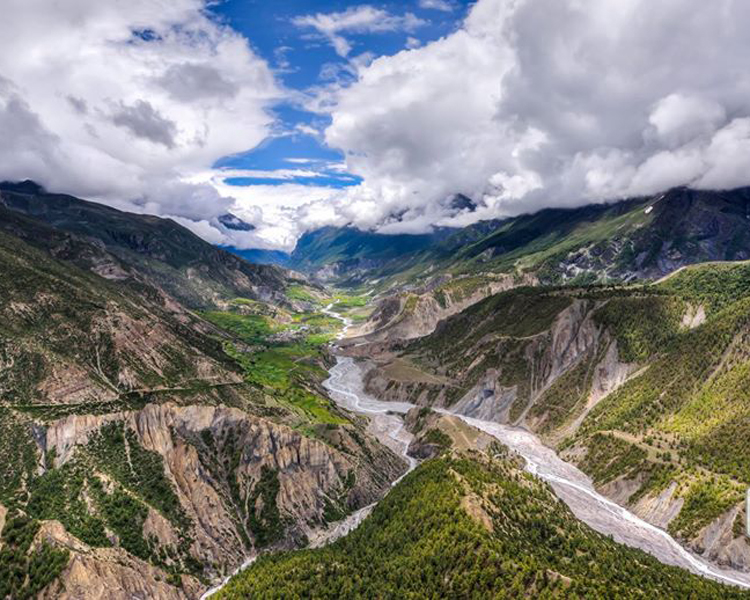
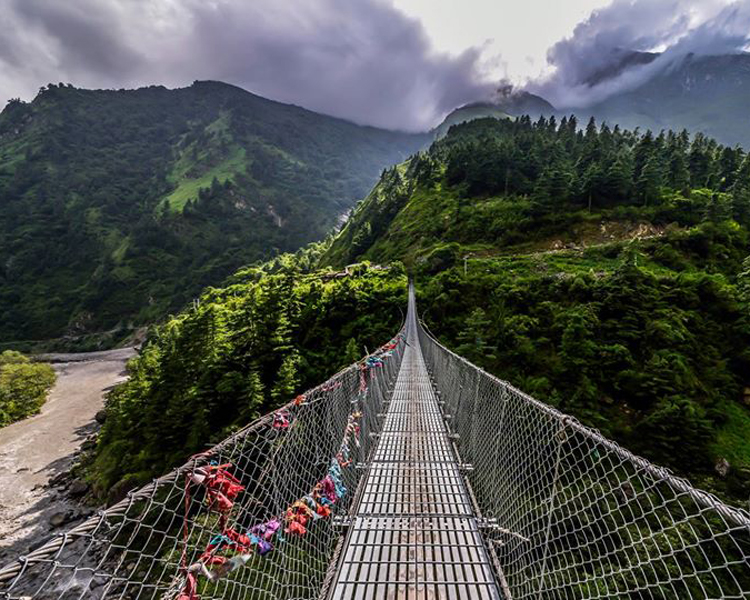
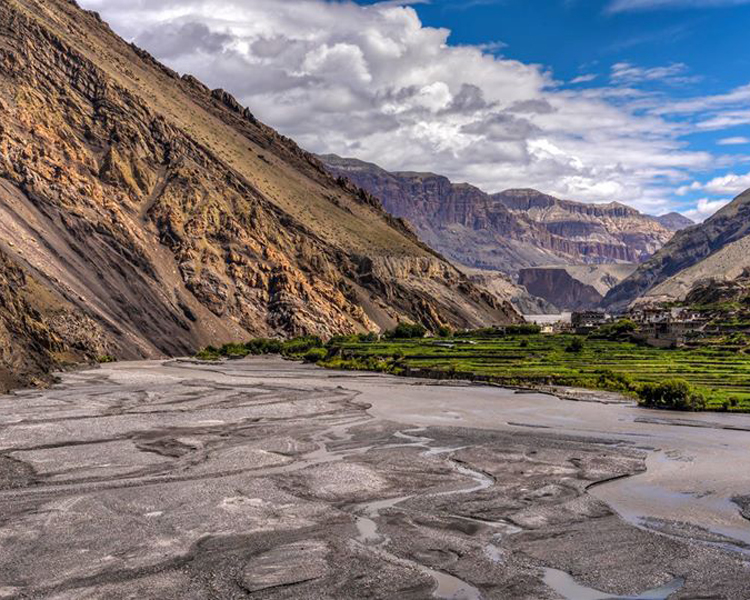
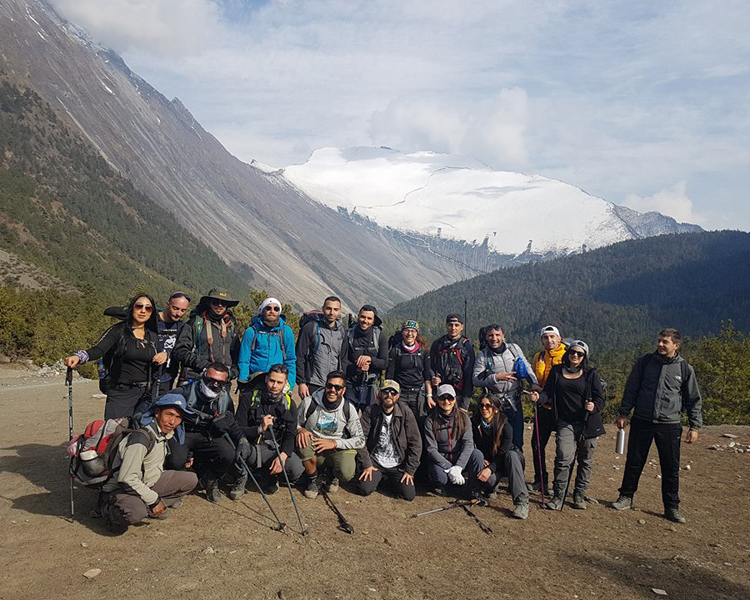
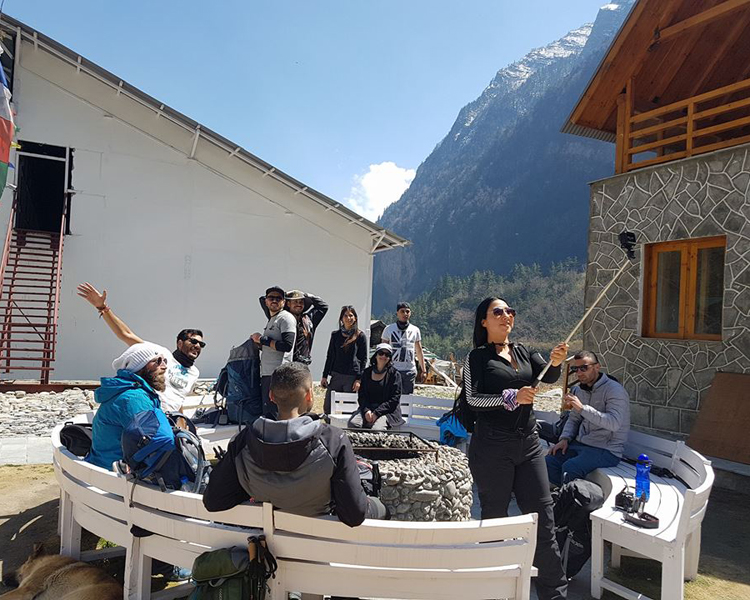



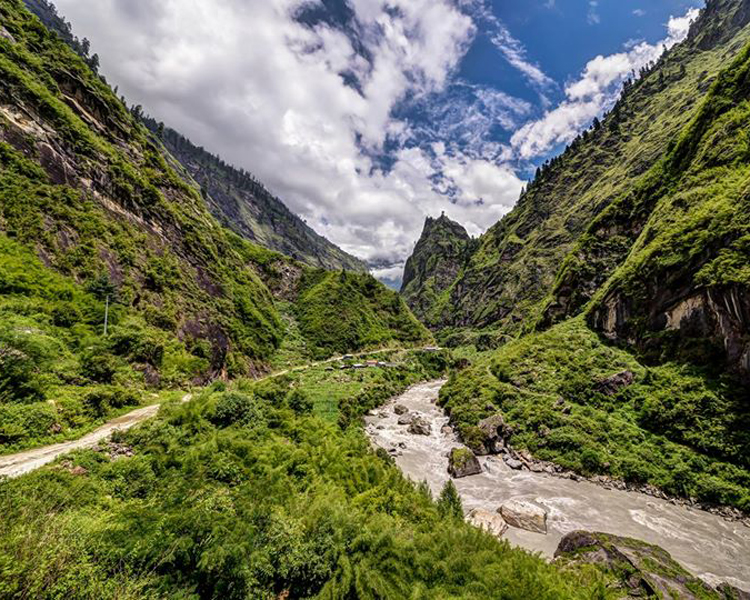




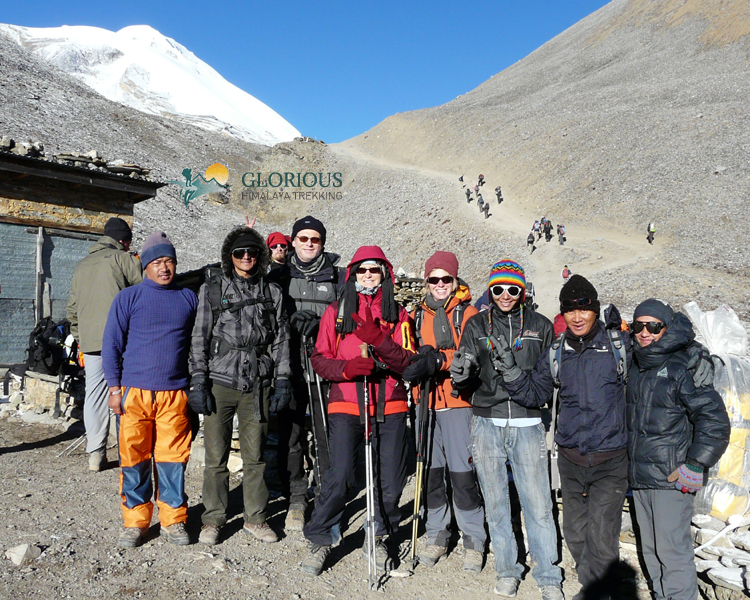

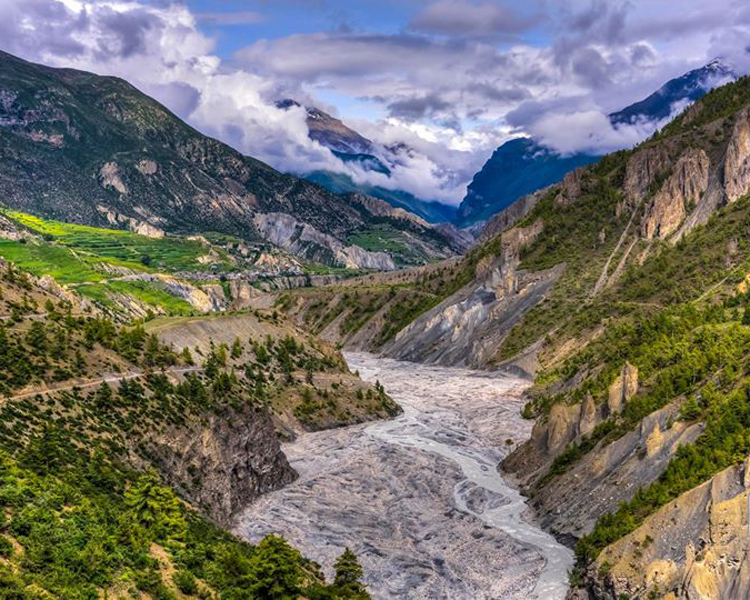






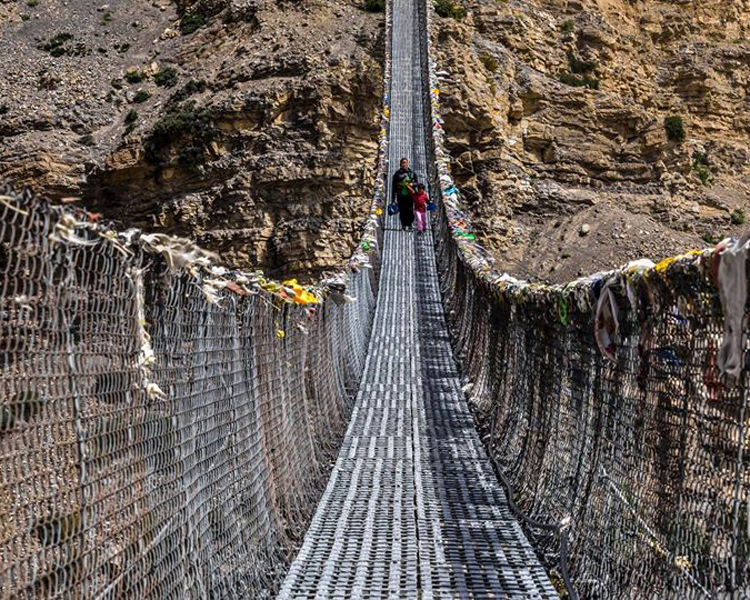





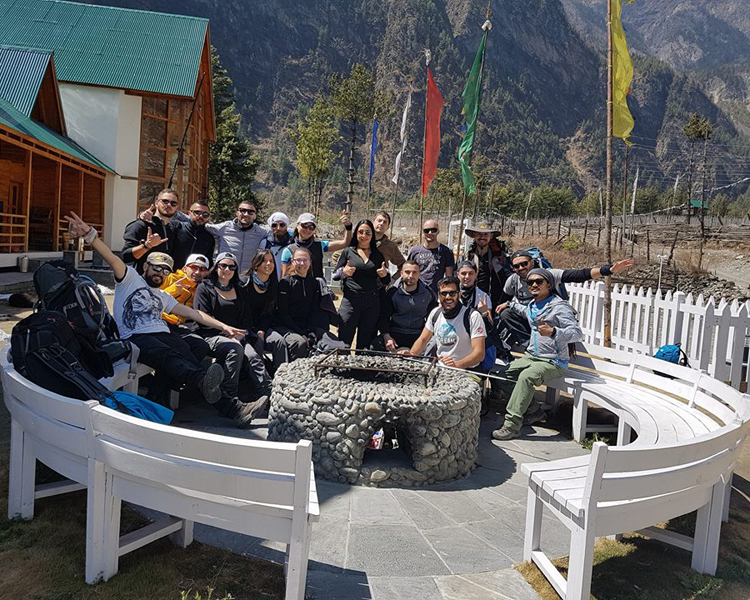
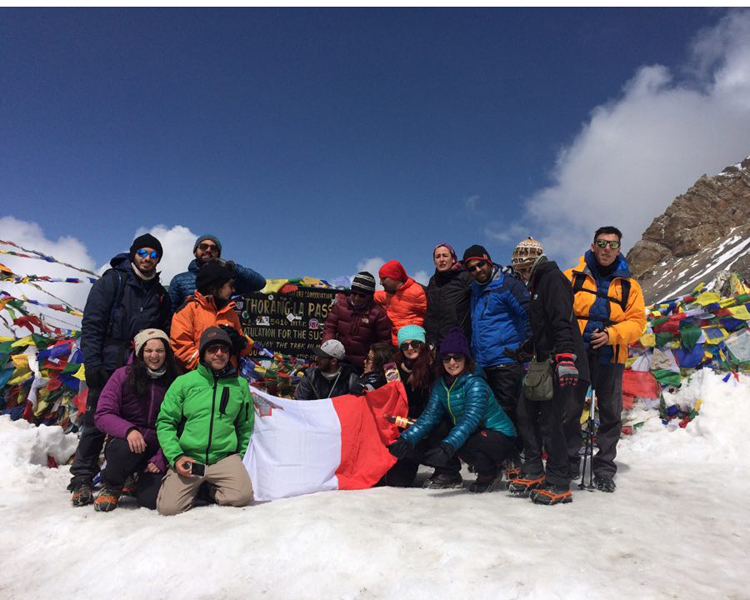
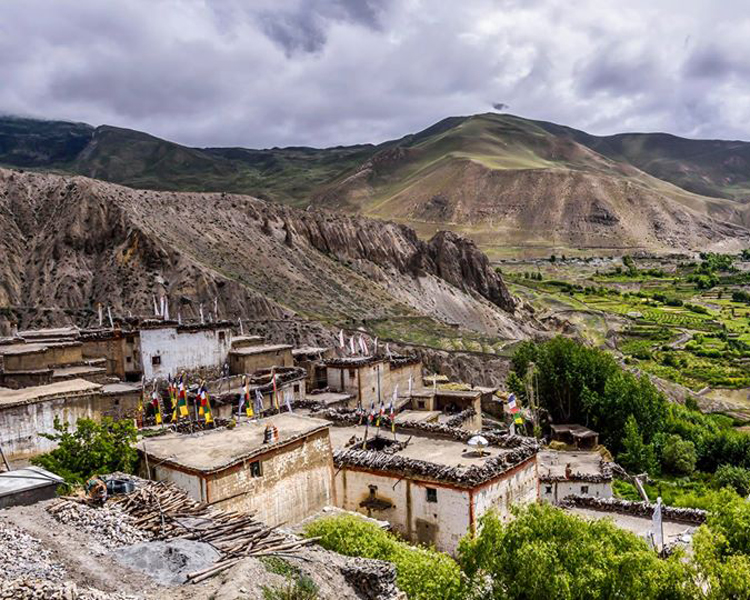

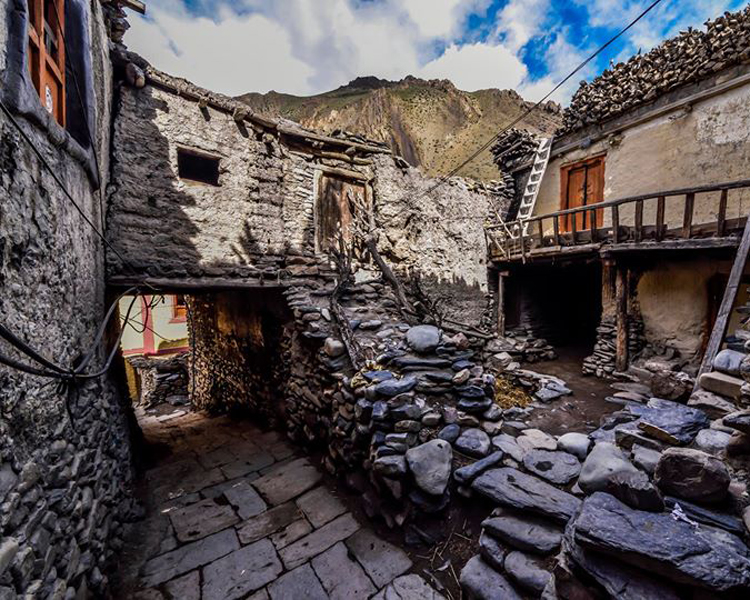
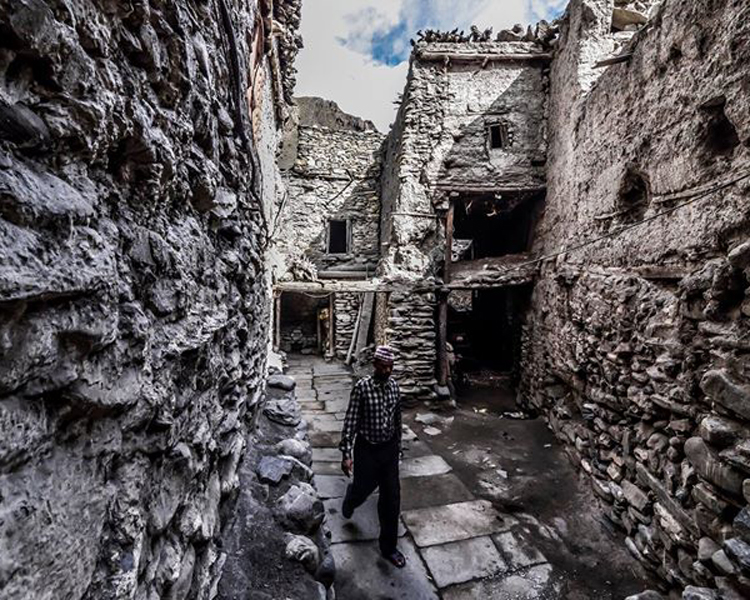
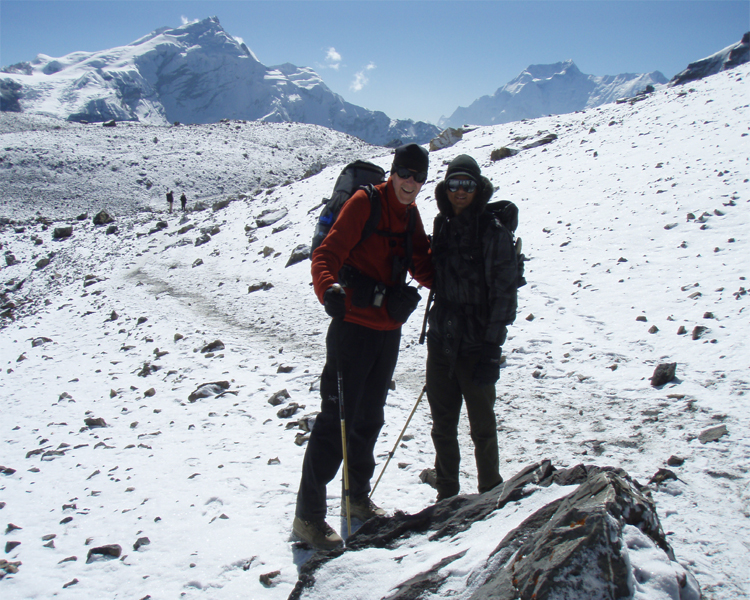
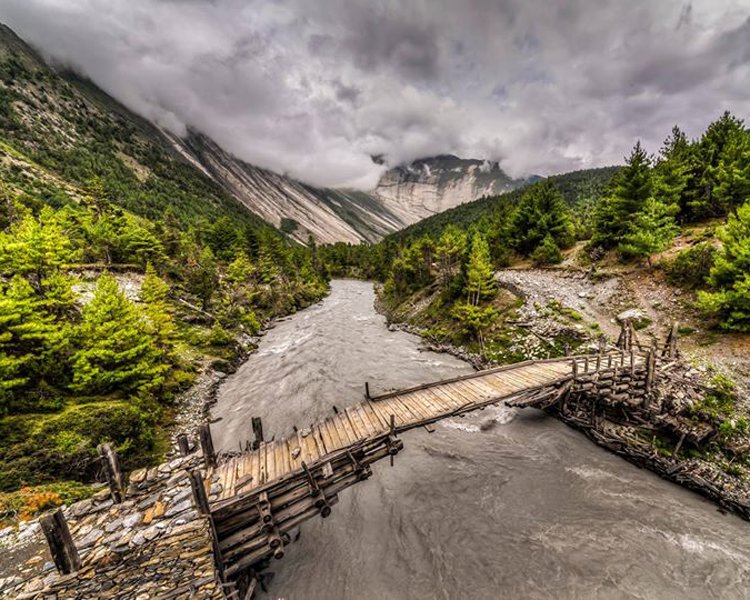
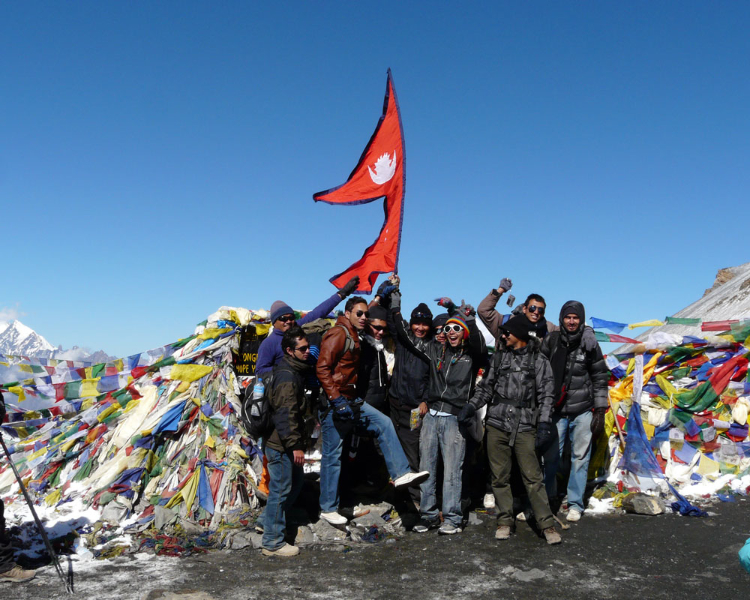

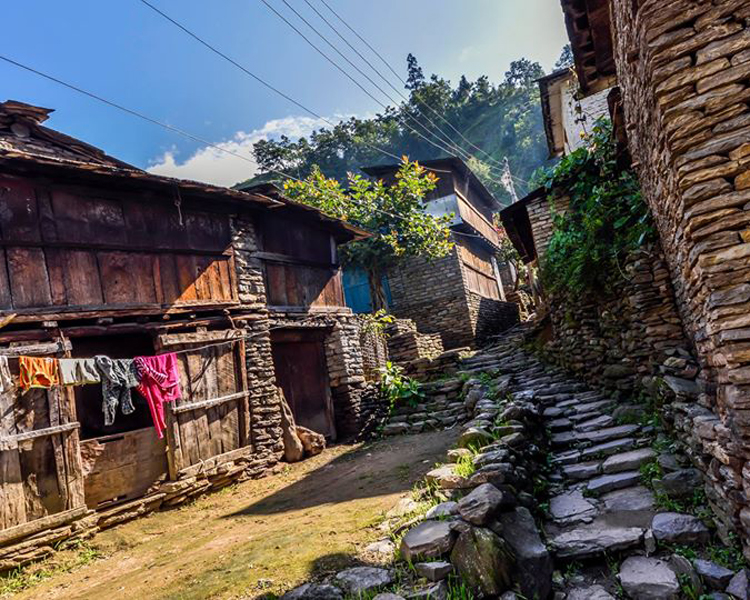

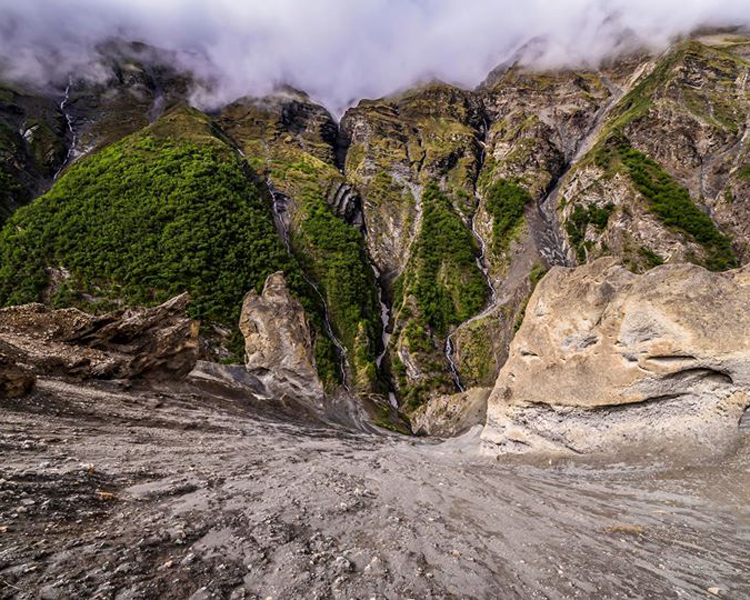



We had an incredible time doing the Annapurna Circuit with Glorious Himalaya. Our guide Prakash is the best- his knowledge, passion for the mountains and fantastic company made the trip unforgettable. We would recommend the Annapurna Circuit, and Prakash, to anyone.
A huge thank you to our porter, Akash, too; he made our trip run so smoothly, and was always so warm and friendly.
This was one of the best things we have done, and we hope we can return to Nepal in the future for more trekking with Glorious Himalaya and Prakash!
Harry C
United Kingdom